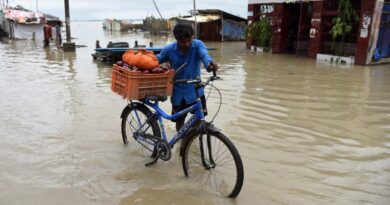Floods cost India $10 billion in damages in 2020

Worldwide restrictions due to the ongoing Covid-19 pandemic may have led to a dip in emissions in 2020, but the decline is almost imperceptible and for millions of people across countries, climate-related disasters have brought catastrophic results.
Climate disasters – majorly floods – brought about an estimated $150 billion in damages in 2020, reflecting long-term impact of global warming.
In India alone, the monsoon season brought extreme rainfall, causing floods and landslides. Between June and October 2020, there were at least 2067 deaths and damages amounting to $10 billion, an annual assessment of weather disasters by Christian Aid has said.
Covid-19 may have dominated the news agenda in 2020, but for many people the ongoing climate crisis compounded that into an even bigger danger to their lives and livelihood, the report – Counting the cost 2020: A year of climate breakdown”- said, adding that actual losses are far higher than those included in the report as most losses were uninsured.
An estimated four per cent of the economic losses from climate-related extreme events occurred in low-income countries were insured, compared to 60 per cent in high-income countries.
The report examined the 10 most devastating events and concludes that based on temperature and precipitation data, in addition to accumulated satellite data on hurricanes and sea level rise, there is little doubt that the Earth’s warming surface temperature is having an impact on the events.
Tropical storms across the globe and throughout the year have been stronger, last longer and carry more water. In addition, the storms are bigger, spreading over a wider area than previously recorded.
Monsoons in India and China have brought significantly higher-than-normal rainfall for the second consecutive year. Five of the most costly events were related to these monsoons.
“In Kerala, a single landslide in a tea plantation killed 49 people. And in Assam, the floods affected more than 60,000 between May and October, with 149 deaths. The city of Hyderabad, where almost 10 million people live, saw a record rainfall of 29.8cm in 24 hours – almost 6cm more than the previous record. The floods submerged cars and houses, killing at least 50 people”, it noted.
This is the second consecutive year where India experienced abnormally high rainfalls during the monsoon season. And over the last 65 years, the country has seen a three-fold increase in extreme rain events. Climate change is likely one of the causes, with models showing that flood frequency in India would be twice as high in a high carbon emission, the report warns.
To prevent further disasters, countries must urgently cut greenhouse gas emissions. While some countries have put forward ambitious plans, others need to come forward. Urgent implementation must be a top political priority, the report recommended.
“Richer countries need to provide more funding to support vulnerable communities living in poorer countries to help them adapt and build resilience to the impacts of climate change. These countries have done the least to cause the climate crisis but suffer its effects disproportionately”.
“All Governments must invest in the energy transition to renewables. Richer countries should support developing countries so they can leapfrog the fossil fuelled development path taken by richer countries”, the report added.



